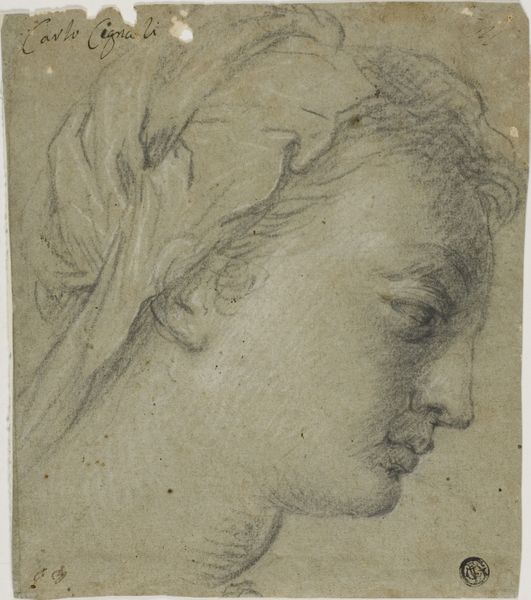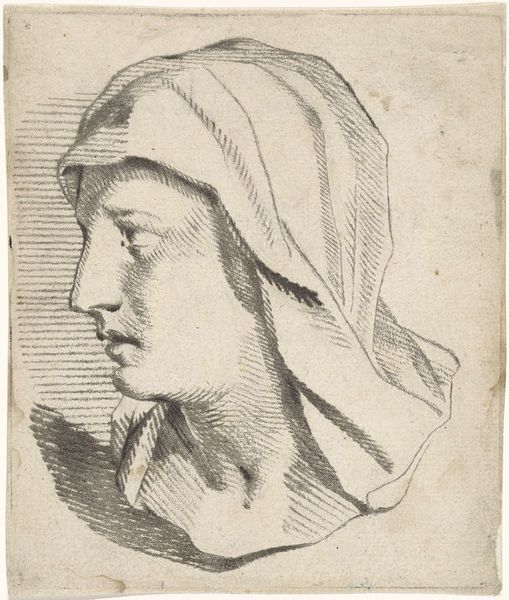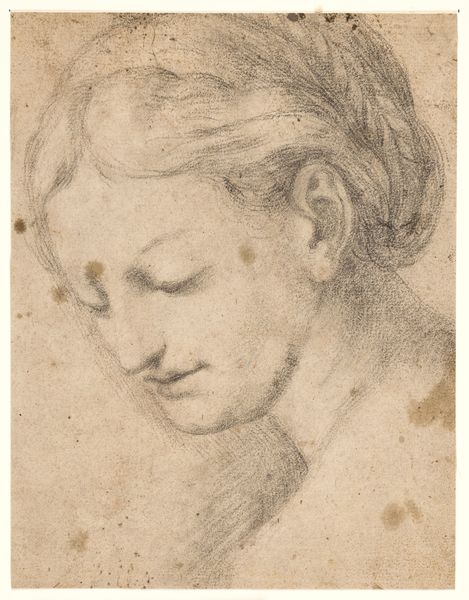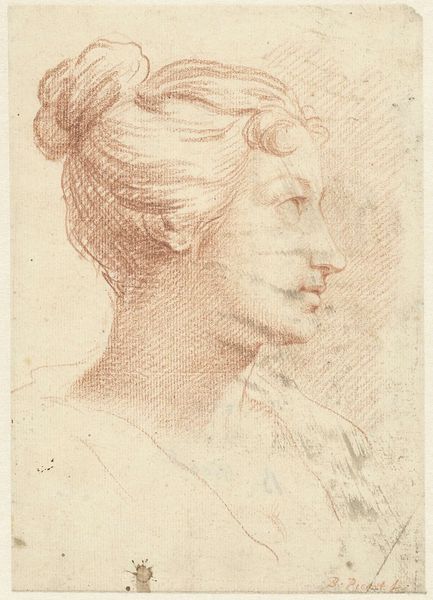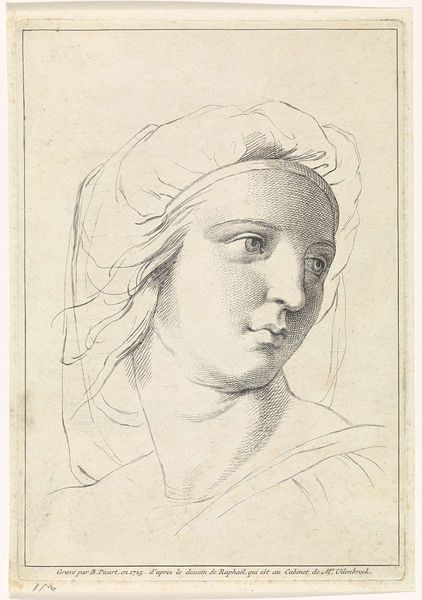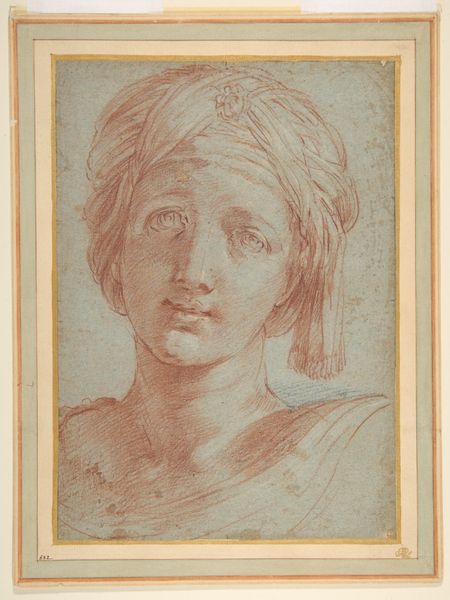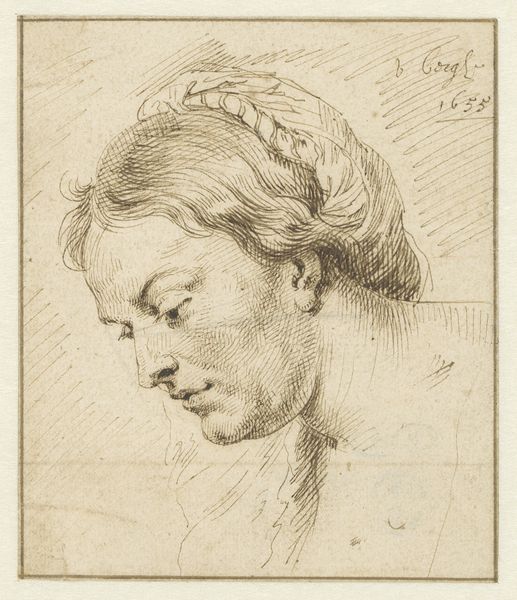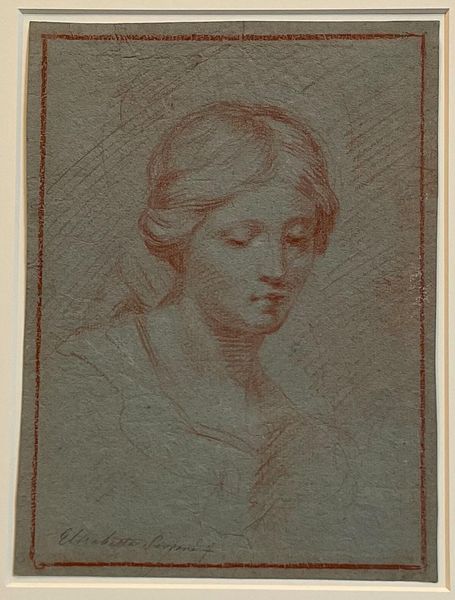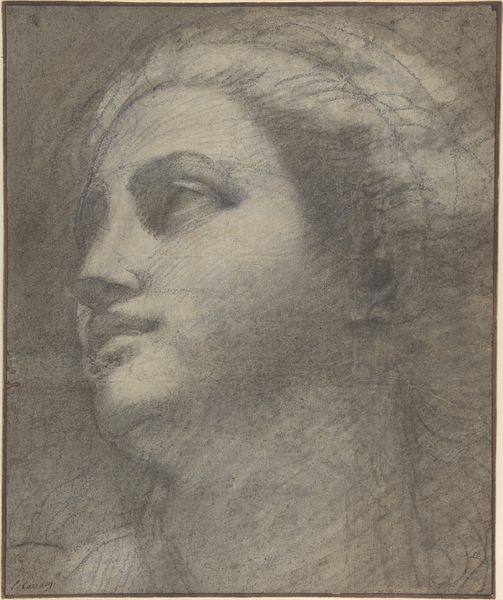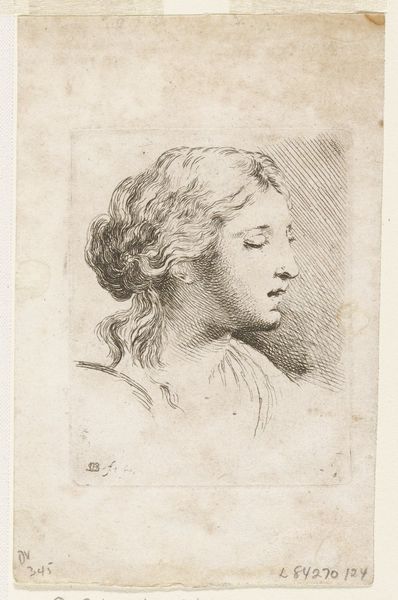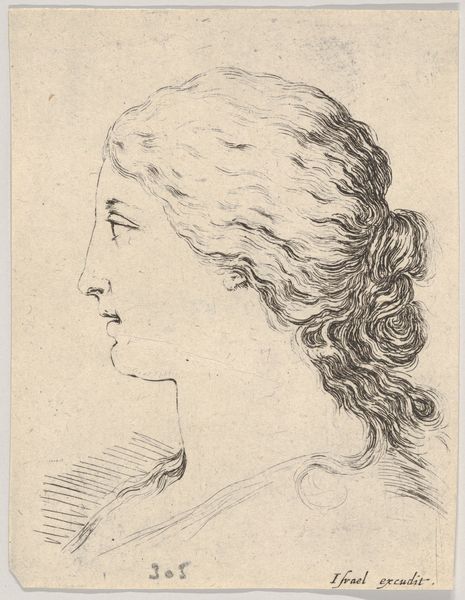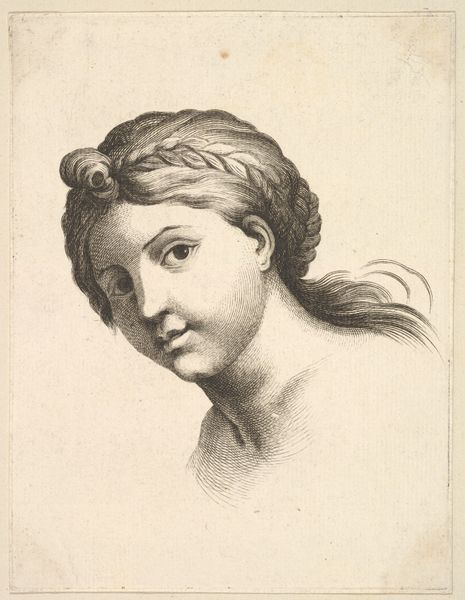
drawing, print, ink, pen
#
portrait
#
drawing
#
baroque
# print
#
charcoal drawing
#
ink
#
pen
Dimensions: 13-7/16 x 9-13/16 in. (34.1 x 25 cm)
Copyright: Public Domain
Curator: Looking at this study, "Head of a Woman", a drawing crafted sometime between 1600 and 1700, my mind instantly travels back in time. It resides at the Metropolitan Museum of Art, here in New York City. It's rendered using pen, ink and charcoal. I’m immediately drawn in. How does it strike you? Editor: It feels… private, doesn't it? Like catching a glimpse of someone lost in thought, or perhaps in a moment of quiet reflection. It's intimate. The warm hues are soothing. There is a sense of understated dignity about it, even though we see her only in profile. Curator: Precisely! The Baroque period saw such a fascinating revival and evolution of portraiture, where character and emotion started seeping through those stiff poses. You know, portraits served as symbolic records of social status, family connections, intellectual aspirations. You see it here with the noble brow, the delicate curvature of her face. Editor: I see it! The curve of her head and then how the bun of hair mirrors it – they really lead your eye through the piece so gracefully. It also reminds me that, beyond the social status you just described, a human being resided here too! These lines give the artwork humanity. Almost feels like I can see the artist contemplating life just by observing the portrait. Does that make any sense? Curator: It does entirely. This anonymity amplifies a sense of universality. When an artwork loses the baggage of specificity, such as who commissioned it or precisely why, we’re left with something more pure: raw emotion, form, skill. In this drawing, the unknown artist immortalized an emotion and a feeling that outlive their specific time period. Editor: Absolutely, like echoes across time! Thanks for that perspective – I'll never see a drawing in the same way again!
Comments
No comments
Be the first to comment and join the conversation on the ultimate creative platform.
